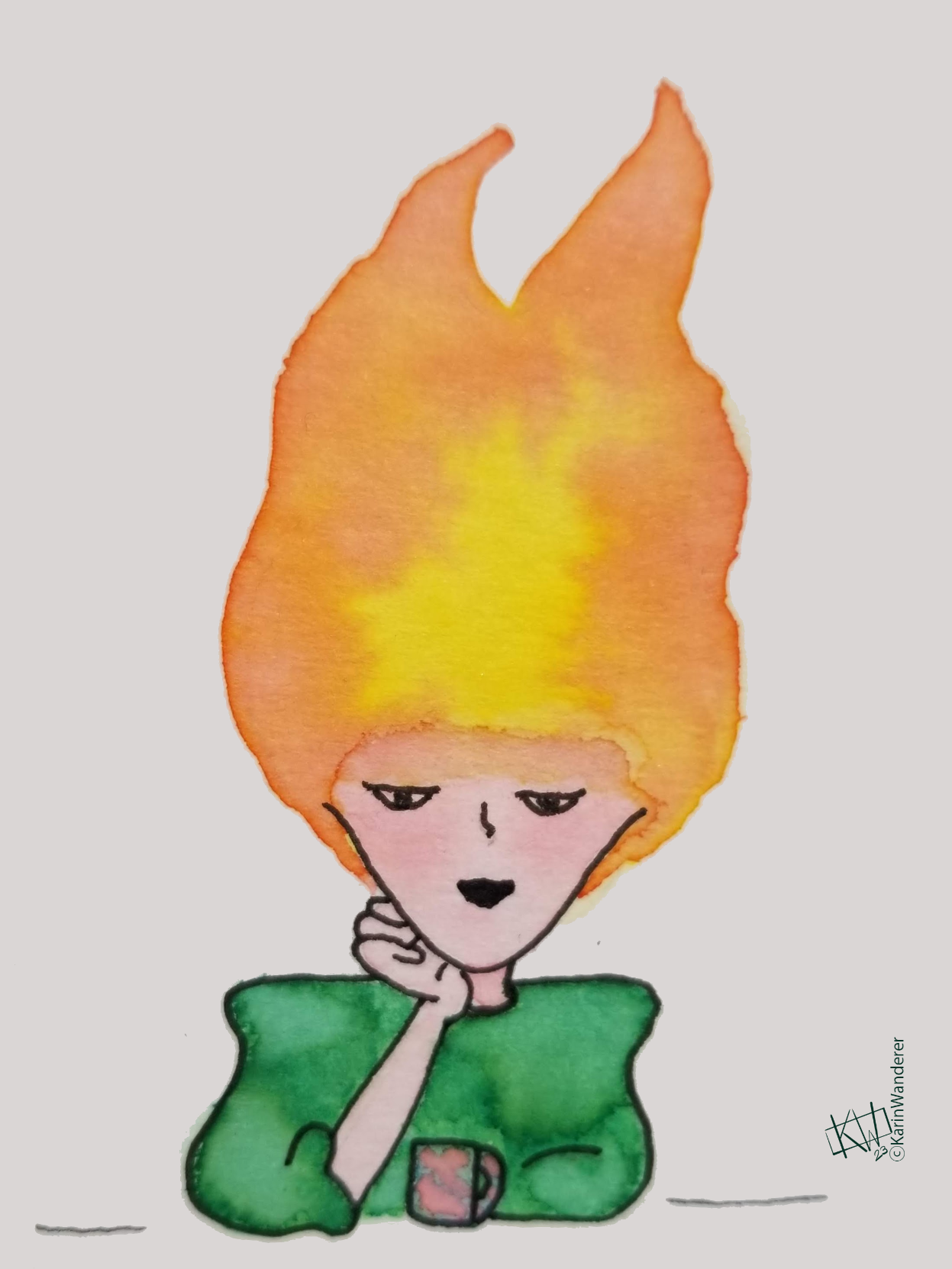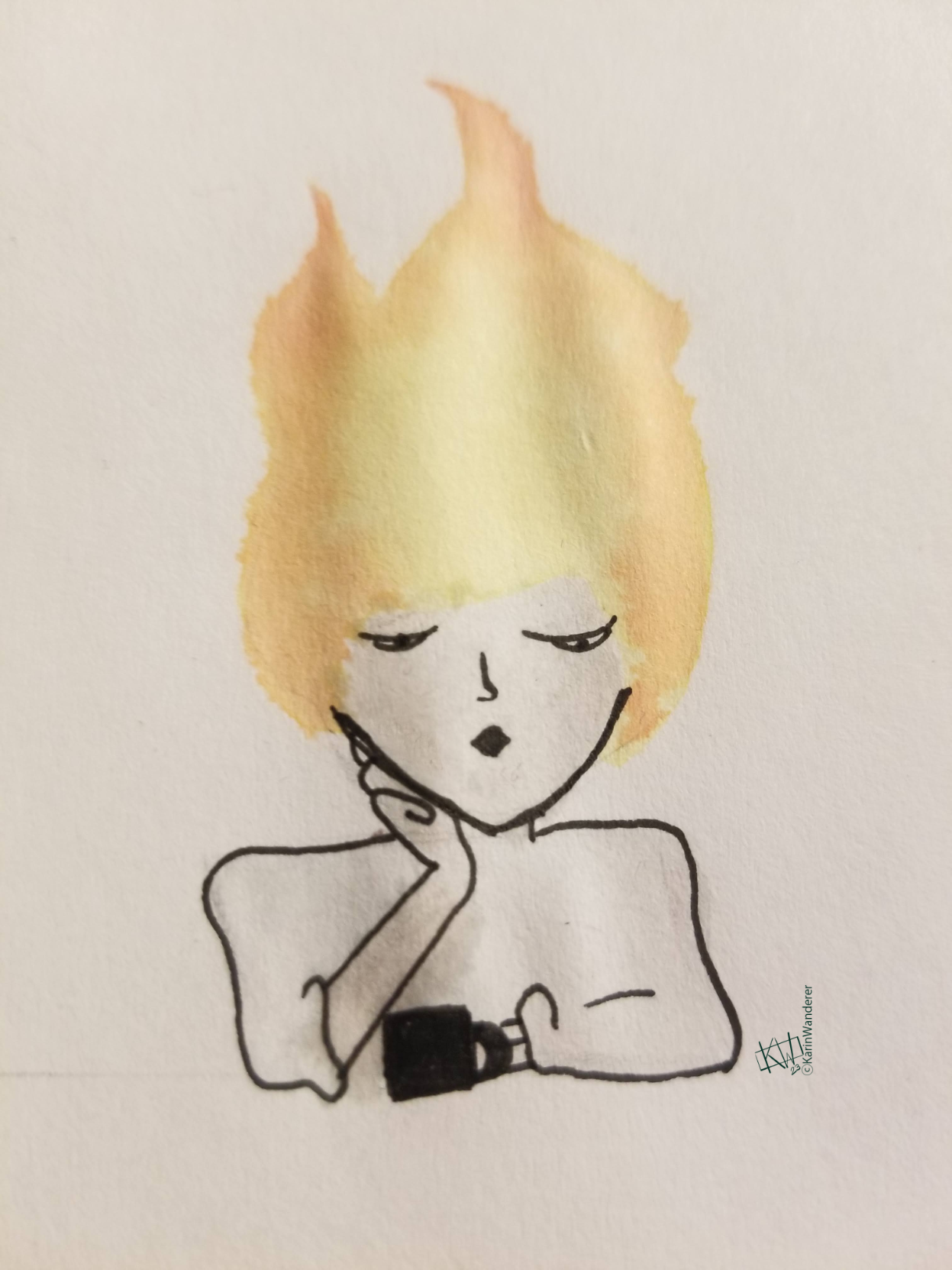Lost in a Fog (Part 4)
How Does Humid Weather Affect Paint?
It’s probably not very surprising that “water” is an essential part of “watercolors”, especially if you’ve read my last 3 articles! In this case the high amount of water in the air is affecting everything, so the problems & the solutions are all slightly different than what we’ve seen before.
The best humidity to work in for most paints, not just watercolors, is in the 40-60% range. Painting in high humidity – at or above 70% – is going to affect every aspect of your watercolor experience. This is true even before you start mixing paints.
Before You Paint
Museums tend to keep the humidity between 50-60% in order to protect the paintings hanging there. This is too dry for mold or mildew to grow, without being so dry that the paper or paint are damaged. If you can work inside near a dehumidifier, make sure it is running well before you start painting.
If you have been storing paint supplies in areas over 70% humidity, or near cold surfaces where condensation builds up (e.g. windows, water pipes, etc.), check all your supplies for mold & mildew before you start painting. Once watercolor supplies have gone moldy, they cannot be used. They will spread the mold to every pan, brush, & painting they touch. Any mold can mess with pigments. Some molds are dangerous to your health. There is no way to dry out your supplies enough to kill every single spore, so each time you add water to start painting you will just be re-invigorating the mold. I’m so sorry. If you see/smell mold, it’s over.
If your paper is not moldy, but has been stored in a humid area, test the paper’s sizing before you start. “Sizing” in this case means the treatment the paper has received so that it absorbs the paint properly without dulling the colors.
 Properly-sized fire
Properly-sized fire
Have you ever tried painting on printer paper & the colors end up washed-out or uneven? The paper wasn’t sized, & too much pigment ended up inside the paper instead of on top of it.
 Poorly-sized fire
Poorly-sized fire
Sizing can be made of gelatin, starch, or a number of other ingredients that all degrade over time, especially in humid environments. Paper that has lost its sizing can still be used for drier media, or you can resize the paper using a product called Watercolor Ground. I have no personal experience with this product, but I want to try it. Watercolor Ground will let you watercolor on not only paper, but also metal, glass, plastic, fabric… just about anything!
While You Paint
There are myriad tips & tricks to weather the humidity a little better while painting. Please be aware, painting in extreme humidity can be dangerous. Sweat does not cool you as efficiently in humid heat & humid cold can sap your body heat very quickly. The following tips are more appropriate for painting in a poorly-insulated studio or out on your porch than on a mountaintop. Please read guides on proper clothing & safety equipment before painting en plein air (fancy art term for outside) in humid weather.
Do not paint in the most humid parts of the day, if you can avoid it. Mid-morning to early evening will be more comfortable for you & your watercolors, as it is comparatively drier. Want to know the best time to start in your area? Touch grass. Once the dew has dried, you’re usually OK to start painting.
Work on multiple pieces at once, if you can. Everything dries more slowly when it’s humid. If you switch between pieces, it’s easier to wait until each layer of each painting is really truly dry. Don’t muddy your colors or blur a piece just because you’re impatient!
Give your paintings lots of support. If you’ve painted even a single watercolor painting I probably don’t need to tell you how water can make paper buckle & ripple. That can be much worse in humid weather, & the paint is more likely to peel. Make sure you tape, tack, stretch, or otherwise secure your paper to avoid this trouble! The adhesive in tape can fail if it gets too wet, consider using binder clips.
I don’t think I can emphasize enough how long everything is going to take to dry. It will take forever. Maybe even twice that. If your paper looks dry but feels cool to the touch, it is still damp. Give it more drying time!
Turn on a fan. You may not want it pointed directly at your paper, but keeping the air moving will make everything better for you & your painting.
Switch to a different medium entirely! I recently switched from 300 lb (640 gsm) watercolor paper to cardboard from a cereal box, as well as using ink along with my paint, as the humidity fell so low the “water” part of my colors was evaporating before I could work.

‘Art differently’ may not be my favorite tactic, but it is a tactic. Thinner paper, less water, or switching entirely to pencil, charcoal, or markers, will all work better at higher humidity than watercolors will.
Happily, there are other solutions. For example, there are a number of DIY solutions you can add to your water to make the paint dry faster. Read I Started This Heatwave & revel in my meticulous #WatercolorScience. Those experiments were focused on keeping the paper wetter for longer, so several solutions which were considered failures in that experiment could be immensely successful in this one!
After You Paint
Be patient! This goes for your painting as well as you paint pans & palette. Everything needs a long time to dry, preferably undisturbed. Give it all as much time as you can! Some paint companies recommend sticking your paint pans in the freezer if it is too humid for them to dry properly- check with your specific paint manufacturer. Do not freeze paint tubes! Read When Winter Comes Howling In to find out why. Many people will let their paint pans dry as completely as possible before storing them & the paper with those little silica gel desiccant packs to be extra safe from moisture build-up.
We Didn’t Listen!
Something went wrong, & now your paintings are moldy. Don’t cry- that will just make it more humid. You may be able to fix this! Here is a link to the Museum of Modern Art’s guide to fixing molded paintings
Turn A Bug Into A Feature
There are countless wet on wet watercolor techniques, & you will have time to play with all of them on a humid day! There are also many desiccants, such as salt or sand, that will soak up moisture. The world is your oyster- dehydrate that sucker!
I Want YOU To Do #WatercolorScience
I live in an area experiencing a drought, so I can’t test any of these solutions. This is your chance!
Test the various solutions in this article & any tricks you may have of your own, then send me your results & pictures! That way I can write a #WatercolorScience article for humid weather. You can contact me on Ko-Fi or Mastodon. Please include the name/user name you would like me to use so I can give you proper credit! I can’t wait to hear from you!
This is an ongoing series of #WatercolorScience articles about how different types of weather affect your painting, even if you work inside.
Extreme Heat & low humidity: We're Having a Heat Wave & I Started This Heat Wave Freezing Temperatures: When Winter Comes Howling In Humidity & Rain: Lost in a Fog
Get my art on mugs & vinyl stickers in my Shop!
Donate to support my works & get cool perks on Ko-Fi
Join us for #ArtABCs, the best art challenge on the internet!
Find me
- All pictures posted are my own work.
- All reviews are my own unpaid & unsolicited opinions.